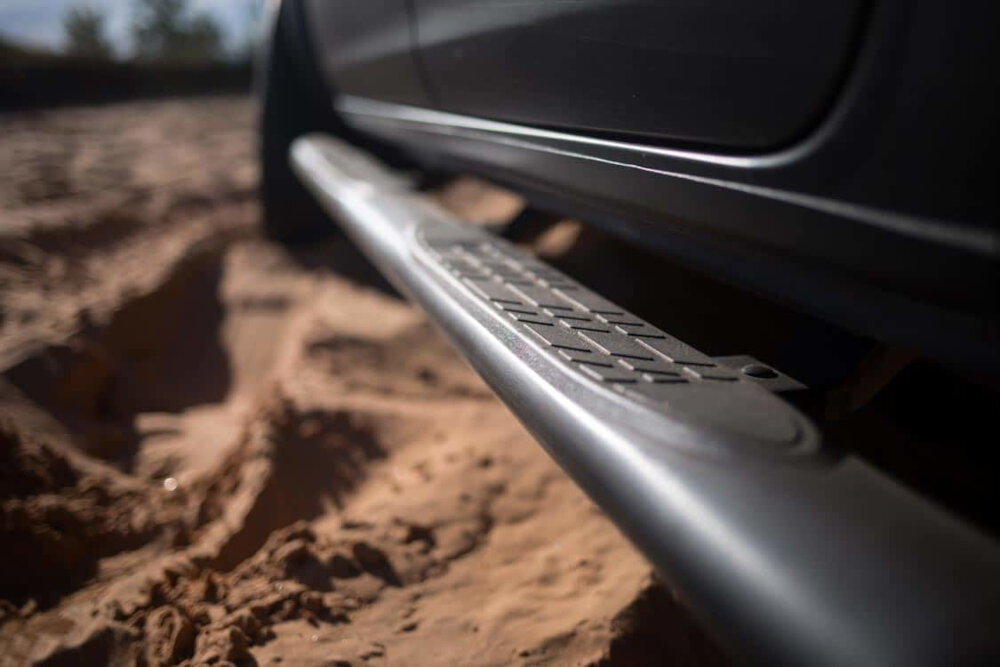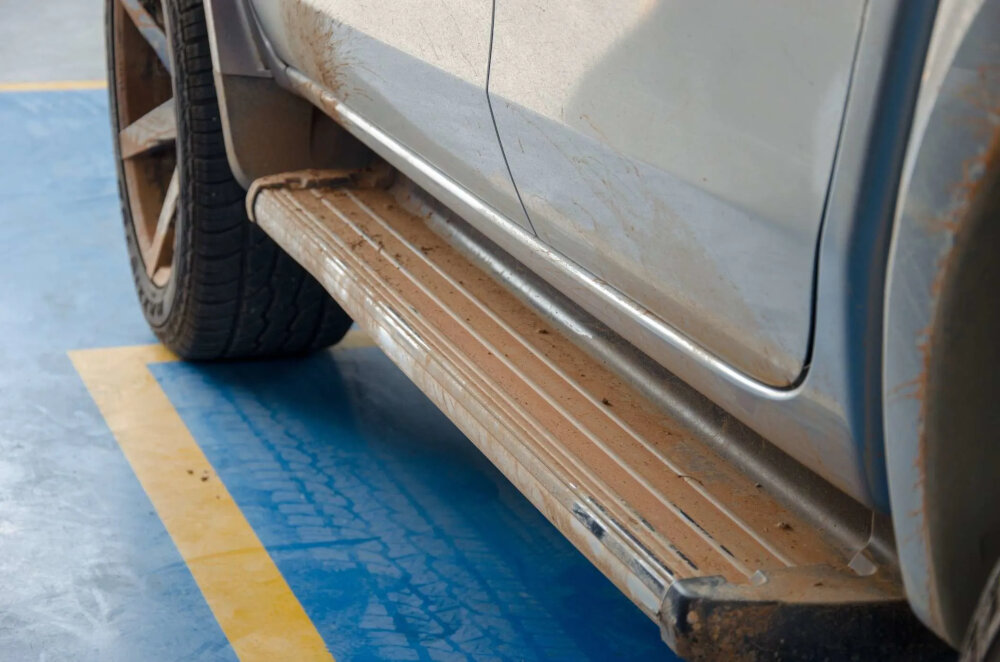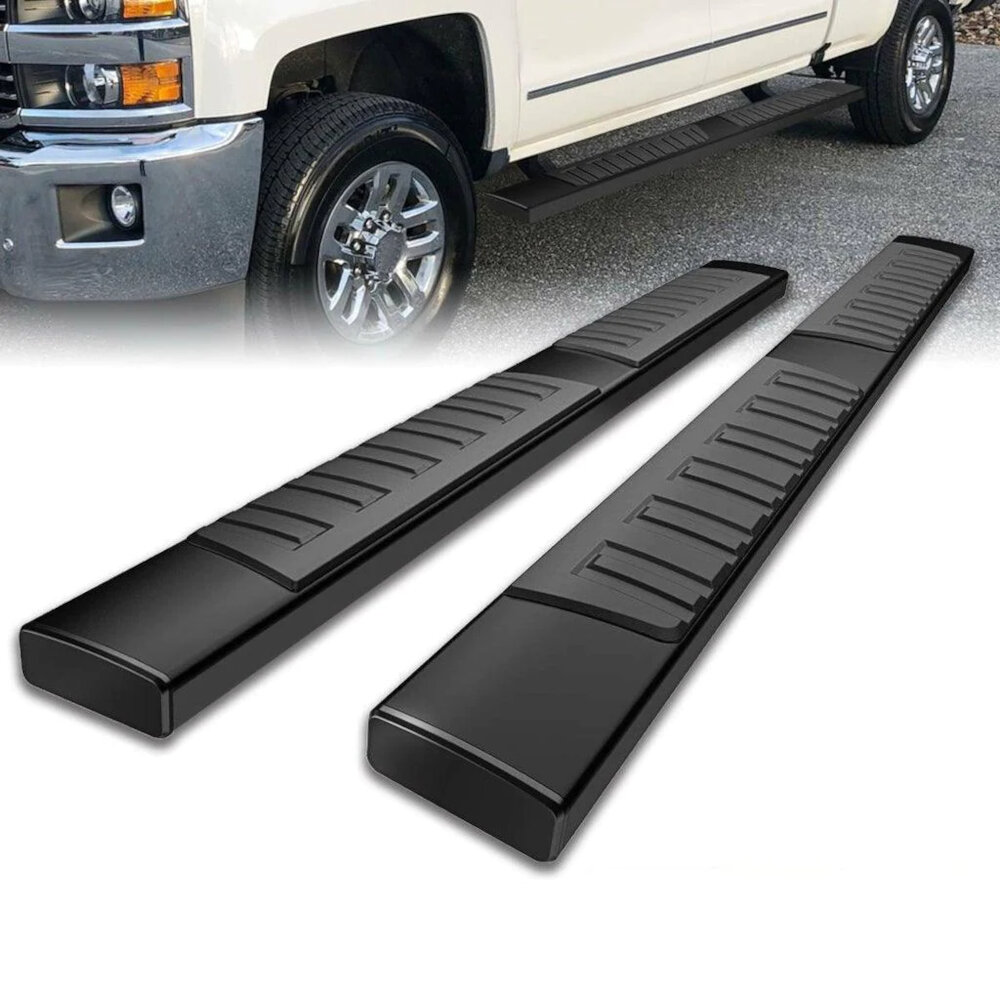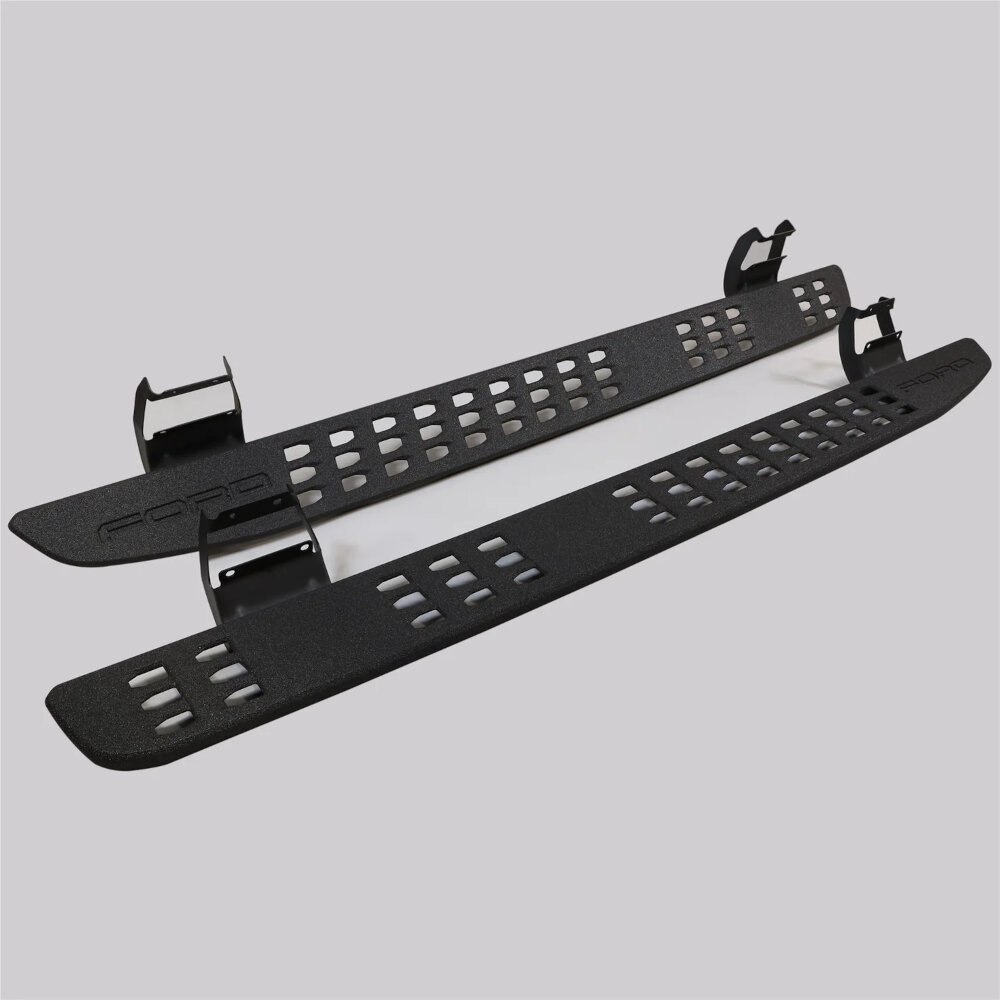Boat Trailer Maintenance: A StepbyStep Guide to Replacing Wood Running Boards

Boat trailer maintenance is a crucial aspect of ensuring a smooth and safe boating experience. One of the essential components of a boat trailer is the running boards, which provide support to the boat and allow for easy loading and unloading. Over time, the wood running boards can become worn, rotted, or damaged, leading to safety hazards and potentially costly repairs. Fortunately, replacing the wood running boards on a boat trailer is a straightforward process that can be completed with a few tools and some basic knowledge. In this step-by-step guide, we will take you through the process of replacing wood running boards on a boat trailer. We will provide detailed instructions on how to remove the old boards, measure and cut new boards, and install them properly. We will also share tips and tricks to ensure that your new running boards are sturdy, secure, and long-lasting. Whether you are a seasoned boater or a novice, this guide will equip you with the knowledge and skills necessary to maintain your boat trailer and keep your boating adventures safe and enjoyable.
Maintaining boat trailers is crucial for ensuring a safe and successful boating experience. Boat trailers are subjected to harsh conditions, including exposure to saltwater, debris, and extreme weather conditions, which can cause damage and wear over time. Regular maintenance and inspection of boat trailers can help prevent accidents on the road and ensure that your boat is transported safely. One of the essential aspects of boat trailer maintenance is replacing the wood running boards, which provide support and stability for the boat during transportation. In this step-by-step guide, we will discuss the importance of replacing worn or damaged wood running boards and provide easy-to-follow instructions for completing this important task.
Wood running boards are an essential component of a boat trailer. The purpose of these boards is to provide a sturdy and stable surface for the boat to rest on while being transported. The wood material is chosen for its durability and resistance to rot, ensuring the safety of the boat during transit. Over time, these boards may become worn or damaged due to exposure to moisture and the elements, which can compromise their effectiveness. Replacing the wood running boards is an important step in maintaining the overall safety and functionality of the boat trailer. By following a step-by-step guide, boat owners can easily replace the boards and ensure that their boat is transported safely and securely.
Step 1: Remove the Old Wood Running Boards

The first step in replacing wood running boards on a boat trailer is to remove the old ones. This task requires a few basic tools such as a socket wrench, screwdriver, and pliers. Before starting, ensure that the boat trailer is parked on level ground and the boat is removed from it. This will prevent any accidents or injuries during the maintenance process. Once the boat trailer is secured, remove the bolts that hold the old wood running boards in place using a socket wrench. Be careful not to strip the bolts or damage the trailer frame while doing so. In case the bolts are rusted or corroded, spray some penetrating lubricant on them and let it sit for a few minutes before attempting to remove them. After removing the bolts, gently pry the old wood running boards off the trailer frame using a screwdriver or pliers. If they are stuck, use a rubber mallet to loosen them. Finally, discard the old wood running boards, clean the trailer frame and prepare it for the installation of new ones.
In order to replace the wood running boards on a boat trailer, there are a few essential tools and materials that you will need. Firstly, you will need a saw, preferably a circular saw, to cut the new boards to size. Additionally, a drill with a screwdriver bit will be necessary to secure the new boards in place. Other important tools include a measuring tape, a pencil, and a level to ensure that the boards are cut and installed properly. As for materials, marine-grade plywood is recommended as it is durable and water-resistant. You will also need stainless steel screws and bolts to attach the boards to the trailer frame. Lastly, a sealant or paint can be applied to the boards to protect them from water damage and extend their lifespan.
Before replacing old wooden running boards on your boat trailer, you must remove them first. To do so, you will need a few tools, including a socket set, wrenches, and a pry bar. Begin by loosening the bolts that secure the boards to the trailer frame, then remove them entirely. Use the pry bar to gently lift the boards off the frame, being careful not to damage the trailer or any other components. Once the boards are removed, inspect the trailer frame for any damage or signs of wear and tear. If necessary, make any repairs or replacements before installing the new boards. With the old boards removed and the frame in good condition, you can move on to the next step in replacing your boat trailer’s wooden running boards.
Replacing wood running boards on your boat trailer can be a daunting task, but there are ways to make the process easier. First, gather all the necessary tools and materials beforehand, such as a saw, drill, screws, and new boards. Next, make sure to measure and cut the new boards accurately to ensure a proper fit. It’s also helpful to have a second person assist with holding the boards in place during installation. Lastly, take the time to properly seal the new boards to protect them from water damage and prolong their lifespan. By following these tips, you can make the process of replacing your boat trailer’s wood running boards a smoother and more manageable task.
Step 2: Measure and Cut the New Wood Running Boards

When it comes to boat trailer maintenance, replacing wood running boards is a common task that many boat owners face. In step 2 of the process, it’s time to measure and cut the new wood running boards. This step is critical to ensure that the new boards fit properly and provide the necessary support for your boat during transportation. To begin, it’s important to measure the length and width of the old running boards carefully. Make sure to take precise measurements to ensure that the new boards fit perfectly. Once you have the measurements, it’s time to cut the new boards. You can use a saw or a jigsaw to cut the boards to the appropriate size. It’s important to take your time and cut the boards straight to ensure that they fit properly. You may also want to sand the edges to ensure a smooth finish. When cutting the boards, be sure to wear protective gear such as gloves and eye protection to prevent injury. By taking the time to measure and cut the new wood running boards, you’ll ensure that they fit properly and provide the necessary support for your boat during transportation.
Replacing wood running boards on a boat trailer is a task that requires some basic tools and materials. You will need a circular saw or a jigsaw, a drill, a hammer, a measuring tape, and a pry bar. Additionally, you will need wood boards, preferably pressure-treated lumber, with dimensions that match the ones you are replacing. Other materials to consider include wood screws, galvanized bolts, nuts, and washers, as well as marine-grade carpet and adhesive. Safety equipment such as gloves, goggles, and a dust mask is also recommended. With these tools and materials in hand, you can proceed with confidence to replace your boat trailer’s wood running boards and ensure a safe and reliable transport for your boat.
When replacing the wood running boards on your boat trailer, it’s essential to measure and cut the new boards accurately. To do this, you will need a measuring tape, pencil, and saw. First, measure the length of the old board and mark the same length on the new board with the pencil. Next, measure the width of the old board and mark the same width on the new board. After that, use the saw to cut the new board along the marked lines. It’s important to make straight and clean cuts to ensure the new boards fit well and provide a stable platform for your boat. Remember to wear protective gear when using the saw and always keep your fingers away from the blade.
When it comes to boat trailer maintenance, accuracy in measurements and cuts is crucial to ensure a successful replacement of wood running boards. To achieve this, it is important to use high-quality measuring tools such as a tape measure, ruler, or caliper, and double-check all measurements before making any cuts. It is also recommended to use a straight edge or a guide to ensure straight cuts and to mark the wood clearly before making any cuts. Additionally, using a sharp saw or blade will make the cutting process easier and prevent any mistakes. Taking the time to measure accurately and make precise cuts will not only ensure the new running boards fit perfectly but will also prolong the life of your boat trailer.
Step 3: Install the New Wood Running Boards

Step 3 in the process of boat trailer maintenance involves the installation of new wood running boards. This step is essential to ensure the safety of the boat while it is being transported. The new wood running boards are usually made of treated lumber, which is more durable and long-lasting than the previous boards. Before installing the new boards, it is important to remove the old ones and check for any damage or rot. Any damaged areas should be repaired or replaced before proceeding with the installation. Once the old boards are removed, the new boards should be cut to the correct length and width to fit the trailer. The new boards should then be drilled and bolted into place, ensuring that they are securely fastened to the trailer. When installing the new wood running boards, it is important to use proper safety equipment such as gloves and safety glasses. The installation process can be physically demanding and requires the use of power tools such as saws and drills. It is also important to follow manufacturer instructions and guidelines to ensure that the new wood running boards are installed correctly. Once the new boards are installed, it is recommended to perform a test run to ensure that they are securely fastened and will not cause any problems while transporting the boat. Overall, the installation of new wood running boards is an important step in boat trailer maintenance and should be done with care and attention to detail.
Boat trailer maintenance is a critical task that requires the right tools and materials to ensure a smooth and safe boating experience. When it comes to replacing wood running boards, you’ll need a few essential items, including a circular saw, drill, hammer, chisel, and measuring tape. Additionally, you’ll need marine-grade plywood, galvanized screws, and carpeted bunks. The marine-grade plywood is essential to withstand water and moisture damage, while the galvanized screws will resist rust and corrosion. The carpeted bunks provide a non-slip surface for your boat to rest on during transport. Overall, having the right tools and materials is essential to ensure a successful replacement of your boat trailer’s wood running boards.
Replacing wood running boards on a boat trailer can be a daunting task, but with step-by-step instructions, it can be done with ease. Firstly, remove the old boards by unscrewing the bolts and screws holding them in place. Clean the brackets and frame with a wire brush and replace any damaged hardware. Then, measure the length and width of the new boards and cut them to size. Sand the edges and corners of the new boards and apply a sealant to protect them from water damage. Finally, place the new boards on the brackets and secure them with bolts and screws. It’s important to ensure the boards are level and evenly spaced before tightening everything down. With these simple steps, you can have your boat trailer looking and functioning like new in no time.
Proper alignment and secure attachment are crucial factors when it comes to boat trailer maintenance. Firstly, ensure that the running boards are aligned symmetrically and set parallel to the frame. Use a level to make sure that the boat is level and the weight is evenly distributed. Secondly, when attaching the boards to the frame, use high-quality stainless steel or galvanized bolts and nuts. This will ensure that the boards are tightly secured to the frame and won’t loosen during transport. Finally, apply marine-grade sealant to the edges of the boards to protect them from water damage and extend their lifespan. By following these tips, you can ensure that your boat trailer is safe and secure during transport.
Step 4: Seal and Protect the New Wood Running Boards

After replacing the wood running boards on your boat trailer, it is essential to seal and protect the new boards. Sealing the wood prevents water from penetrating the surface, which can lead to rot and decay. It also shields the wood from the damaging effects of UV rays and other environmental factors. To seal and protect your new wood running boards, you can use a high-quality water-based sealant or a marine-grade varnish. These products provide a durable and long-lasting protective barrier that will keep your wood running boards looking good and functioning properly for years to come. When applying the sealant or varnish, be sure to follow the manufacturer’s instructions carefully. Apply the product evenly and allow it to dry completely before using your trailer. It is also a good idea to periodically inspect the boards for any signs of wear or damage and reapply the sealant or varnish as necessary. By taking these steps to seal and protect your new wood running boards, you can ensure that your boat trailer remains safe and secure during transportation, and that your investment in new boards is well-protected.
When it comes to boat trailer maintenance and replacing wood running boards, having the right tools and materials is essential. Some of the tools you will need include a saw, drill, screws, measuring tape, and a level. It’s also important to have safety equipment such as gloves, eye protection, and a dust mask to protect yourself during the process. As for materials, you will need pressure-treated wood boards, carpeting or non-slip material, and stainless steel screws or bolts. It’s important to choose high-quality materials that can withstand the wear and tear of water and the elements. By having the right tools and materials, you can ensure that your boat trailer is in top condition and ready for your next adventure on the water.
To begin sealing and protecting the new boards on your boat trailer, make sure the wood is clean and dry. Using a sander or sandpaper, smooth out any rough spots or splinters. Apply a coat of wood preservative to all sides and edges of the boards, making sure to coat any drilled holes as well. Allow the preservative to fully dry before applying a coat of marine-grade sealant, ensuring full coverage on all surfaces. Repeat this process until you have applied at least three coats of sealant, allowing each coat to fully dry before applying the next. It’s important to regularly maintain and re-apply sealant to protect the wood from moisture, UV damage, and general wear and tear. With the right care and maintenance, your boat trailer’s running boards will stay strong and durable for years to come.
Choosing the right sealant for your boat trailer is crucial to ensure that it is properly protected against water damage and corrosion. When selecting a sealant, it’s important to consider the environment in which your trailer will be used, as well as the materials used in its construction. Look for a sealant that is specifically designed for use on boats or trailers, and that is waterproof and UV-resistant. It’s also important to ensure that you apply the sealant evenly and completely, covering all areas that may be exposed to water or moisture. Take your time during the application process, and use a caulking gun or other tool to ensure that the sealant is applied smoothly and evenly. By taking these steps, you can help ensure that your boat trailer remains in good condition for years to come.
Maintaining boat trailers is crucial for the safety of your boat and those on the road. Neglecting trailer maintenance can lead to accidents, damage to your boat, and costly repairs. One of the most important aspects of trailer maintenance is ensuring the wood running boards are in good condition. These boards provide support for your boat and distribute its weight evenly across the trailer. Over time, the boards can become worn, rotted, or damaged, putting your boat at risk during transport. By replacing the running boards when necessary, you can ensure your boat stays safe and secure while being towed. Keeping up with regular maintenance checks and repairs can prevent any unexpected issues and prolong the life of your boat trailer.
Replacing wood running boards on a boat trailer is an essential aspect of maintaining your trailer’s functionality and longevity. Wood running boards are prone to rotting, warping, and splitting, which can lead to unsafe conditions for your boat and trailer. By replacing the wood with durable and weather-resistant materials such as aluminum or composite boards, you can ensure that your trailer can handle the weight of your boat and withstand harsh weather conditions. It is also important to note that new running boards can enhance the overall appearance of your trailer, making it look sleek and modern. The benefits of replacing wood running boards are numerous and should not be overlooked when it comes to maintaining your boat trailer.
When it comes to replacing wood running boards on a boat trailer, there are a few final tips to keep in mind to ensure a successful replacement. Firstly, ensure that the new wood running boards are cut to the correct length and width, and that they fit snugly onto the trailer frame. Secondly, use marine-grade screws and bolts to secure the boards in place, as these will be more resilient to water damage and rusting. Additionally, it is a good idea to apply a waterproof sealant to the wood boards to protect them from moisture and other environmental factors. Finally, make sure to regularly inspect the wood running boards for any signs of wear and tear, and replace them as needed to maintain the safety and integrity of your boat trailer.
Conclusion

In conclusion, boat trailer maintenance is an essential aspect of being a responsible boat owner. Replacing the wood running boards is just one of the many steps that need to be taken to ensure the longevity and safety of your boat trailer. By following the step-by-step guide, you can do this task yourself and save money on professional services. However, it is crucial to keep in mind that regular inspection and maintenance of your boat trailer is necessary to avoid any unforeseen issues while transporting your boat. With proper care and attention, you can enjoy many years of hassle-free boating and worry-free trailering.

